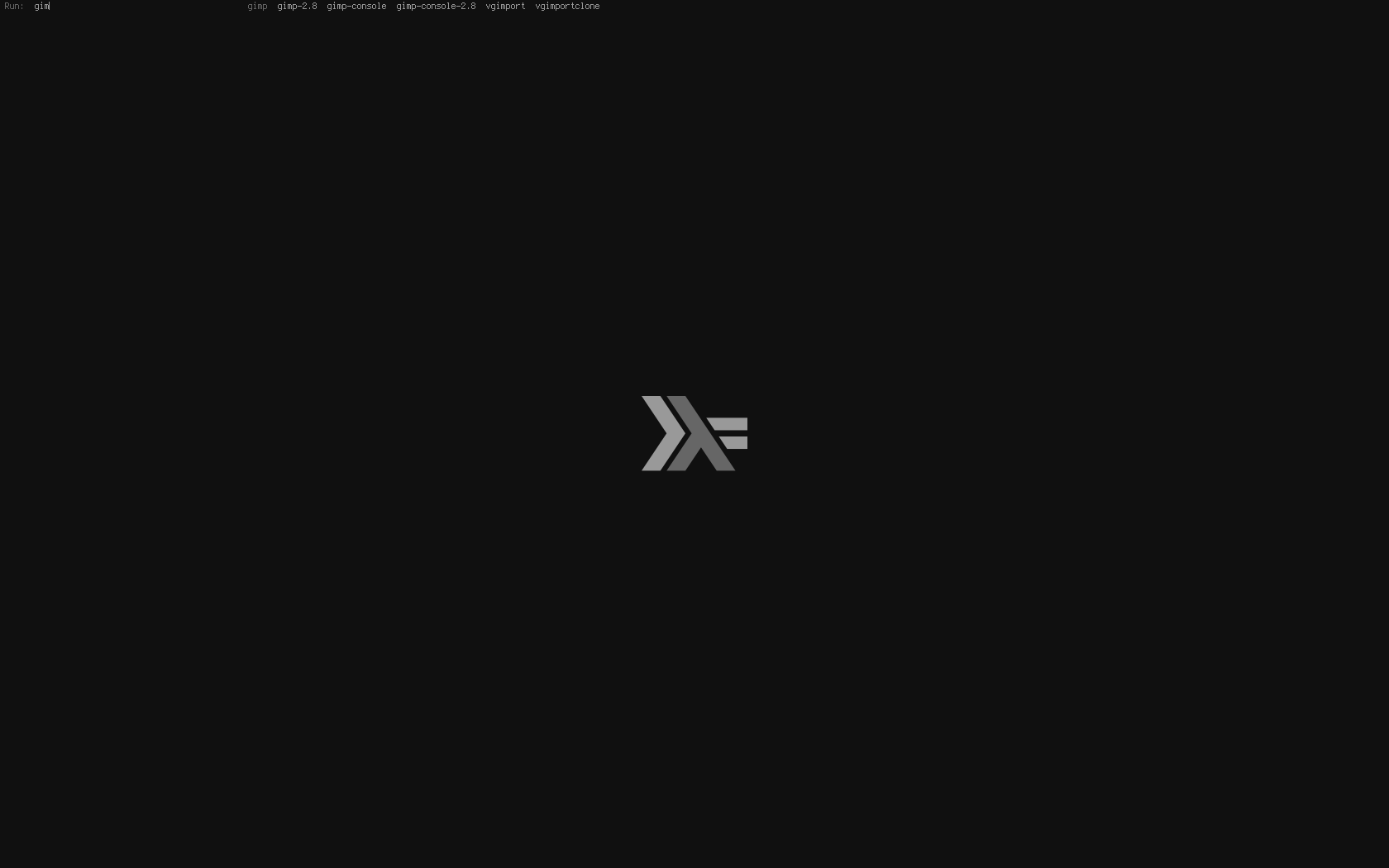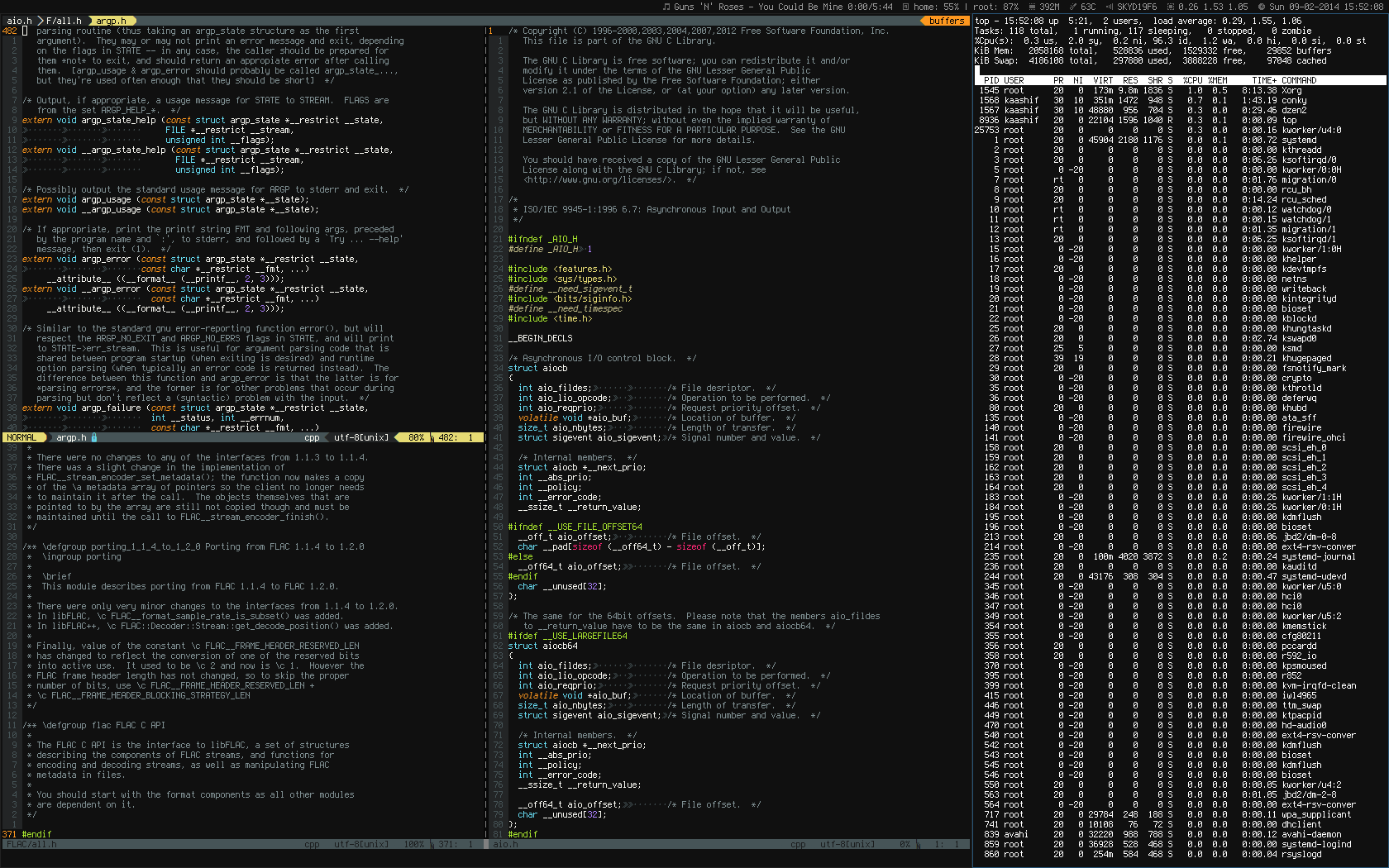My Desktop
2014-02-09
Over the years, I've used a few different OSes and desktop environments, and the one I use currently is portable to many operating systems, mostly due to the efforts of the writers of i3 over at i3wm.org, but also the standards-compliance of POSIX, meaning that my shell scripts (which you can find here) work on all
operating systems worth using (naturally, this excludes Windows).
EDIT: That link doesn't work. This does.
You might already know how to manage dotfiles effectively with GNU Stow, because that's exactly how I manage mine - it allows me to install the config files I need, and no more. This isn't what I want to write about, though, I've already written something about that - I want to show off the final result of my dotfiles - my desktop.
This is what my blank desktop looks like. There isn't much to look at, and I haven't put any fancy conky widgets or anything there because I hardly ever just look at my wallpaper anyway. That's the Haskell logo, it seems as good a logo as any to have on a desktop I never see (other choices include Puffy, Tux and Beastie, all OS logos).
At the top is a bar, created by piping conky output into dzen2. The music player is mpd (music player daemon), which I can control using my phone, command line clients, GUI clients, scripts, and so on. Some might say running a service to play music is overkill, but it's actually more lightweight than most solutions, and is very Unixy, too.
If there is an application I want to launch that I haven't already bound to some keyboard chord (for example, Super-C for Firefox and Super-G for gVim), I use dmenu to get to it. I had to apply a plethora of patches to get dmenu to support colour changing, Xft fonts, and variable height/width. It turns out that you can get a pre-patched version of dmenu here. While it is called "dmenu2", it's only dmenu with a few patches, and it's not an official suckless.org tool anyway. All of the output on he bar comes from all the normal Unix status programs - df, uptime, date, and so on. I don't remember where I got the icons, but I saw Bill Indelicato using icons which looked similar, so maybe I got them there or we both got them from the same place.
Using the magic of mpc (media player client) and dmenu, I managed to get dmenu to create a randomly shuffled list of artists in my music collection. When I select one of them, the current playlist is replaced by the discography of the chosen artist. It's very convenient, only a Super-Shift-D away - far faster than opening a music player, going to a list of artists... I still do that, but less often, since most of the time I just want some randomly chosen music, not anything specific.
I'd like to say this is what my laptop usually looks like, but the reality is that I've just opened some random files in /usr/include with gVim. Well, this might be what a kernel hacker's laptop looks like sometimes - mine is mostly just the one shell script or Haskell program open, and usually a browser with Reddit or 4chan on the side. The window manager is i3, by the way, a WM I like because of its simple and efficient manual tiling - none of that XMonad dynamic crap, way too inflexible and sometimes annoying.
I hope this has given you some insight into how I use my laptop, but realistically, you've probably just commented on the similarities between my desktop and someone on /g/'s. Fair enough, I haven't worked hard enough on my desktop for it to be very unique, and I don't intend to, because my setup works for me, and lets me work without using a mouse, so it's a win-win-win for me, my "hacker cred" (I hear the kids using Ruby and node.js say that nowadays) and my laziness.




